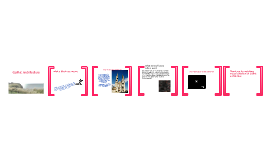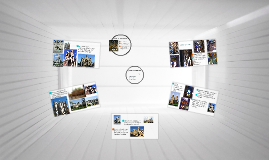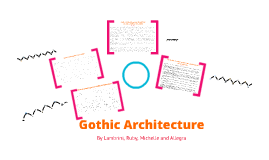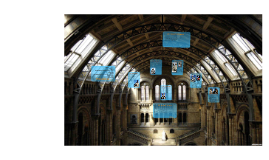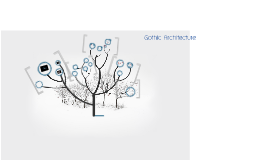Gothic Architecture
Transcript: Located in Paris, France. over 30,000 visitors a day. Saint Stephen Construction of Notre Dame as we know it today began in the year 1160. In 1163 the cornerstone of the cathedral was placed. The final touches were finished in the 1230’s. two towers reach up to 226 feet. It’s spire reaches 300 feet It’s tower has five bells. Playing these bells in certain sequences can mark services or the time of day. One of the first cathedrals to use flying buttress (insert photo into slide). Famous for several small sculptures and gargoyles Height is most recognizable feature Flying Buttress Pointed Arch Vaulted Ceiling with Ribs Light and Airy Interior Stained Glass windows Gargoyles Ornate Exteriors with Tracery Located in Reims, France In 1211, Cathedral replaced an older church that was destroyed by a fire The main architects were Jean d’Orbais, Jean-Le-Loup, Gaucher de Reims, and Bernard de Soissons Cathedral is 455 feet long, 125 feet high, and 98 feet wide In 1233, a long-running dispute between church chapter (monks, nuns, etc.) and the townsfolk boiled over In the Hundred Years War, under siege by the English from 1359 and 1360 Has two towers that are 267 feet Building was damaged in World War I There are 3 portals that are laden with statues and statuettes The North side has statues of the Bishop of Reims and representations of the Last Judgment and Christ South side has a modern Rose window of Prophets and Apostles Main Church of Florence, Italy Began being built in 1296 by Filippo Brunelleschi Finished structurally in 1436 Symbolized Florence’s growing importance After 100 years of construction, the structure was still missing its octagonal dome Last component to be completed in 1436, lantern was added in 1461 Dome built without supports because of the design The outer, smaller shell supports the roof and protects the inner shell from outer elements There’s a staircase between the two shells, leading up to the lantern Key Elements Designed in 1434 by Pierce Robin Located in Rouen, France Replaced an existing Parish church It is considered a Paradigm of the Flamboyant Gothic Style Tracery is - elaborate pattern of interlacing, stone lines in architecture, especially Gothic windows The Choir is octagonal Choir - seating area for clergy and choir Western facade is has no towers, but is has a five-gabled porch that facets into three planes and bows outward Gables - Triangular section at the end of a pitched roof between two sloping sides Porch has flying buttresses above the aisles Tympanum displays Christ with hands out to people that are surrounding him. To his right, the people are headed toward Heaven, to his left toward hell Tympanum - semi-circular or triangular decorative wall over an entrance Gothic Architecture Built in the 1194 about fire had almost completely destroyed it Classical point in architectural history When Gothic reached its maturity Beautifully sculpted 13-century stained glass All colors mean something different Arcade piers have 4 shafts, one in each main direction The clerestory windows are divided into two large lights Above is a miniture rose window Exterior structure is made with flying buttresses Strengthened by the half arches, expressing the upward movement Ringed by towers and spires The vail of Mary is in the cathedral Alnwick Castle What Stained Glass Colors Mean Located in Northumberland, England. Receives over 800,000 visitors per year. The first parts of the castle were erected in about 1096. Built to protect England’s Northern border against the Scottish The current Duke and his family reside in a castle There is a deep ravine to the south and east Distinguished as one of the earliest castles in England to be built without a square keep. Consists of two main rings of buildings The inner ring contains the principal rooms. Featured in Cinematics such as all of the Harry Potters and Robin Hood Which of the structures did you like best and why? Sainte-Chappelle Florence Cathedral Windows read like stories Light reminded people of God Bible Stories and Events were main inspiration for designs Put together intricately - Cut glass, Lead, painted Why did you make your glass the way you did - those colors? Cathédrale Notre Dame de Reims What do you know about Notre Dame or the Hunchback that resides there? Stained Glass The Chartes Cathedral Church of Saint-Maclou History Located right in the heart of Paris, France Constructed some time after 1239 to house Louis IX's most prized relics. Completed in 1248 and consecrated on April 26th Quick phase of the gothic architectural style known as Rayonnant. This is made obvious from the large glass stained windows and emphasis in the arches. large stain glass windows cover the walls. in between the windows are twelve oversized statues of the twelve apostles. Scenes on the windows depict the new testament and the book of genesis The Basics Goths held power in Europe Represented Giant Steps from basic style Evolved from Romanesque style with






